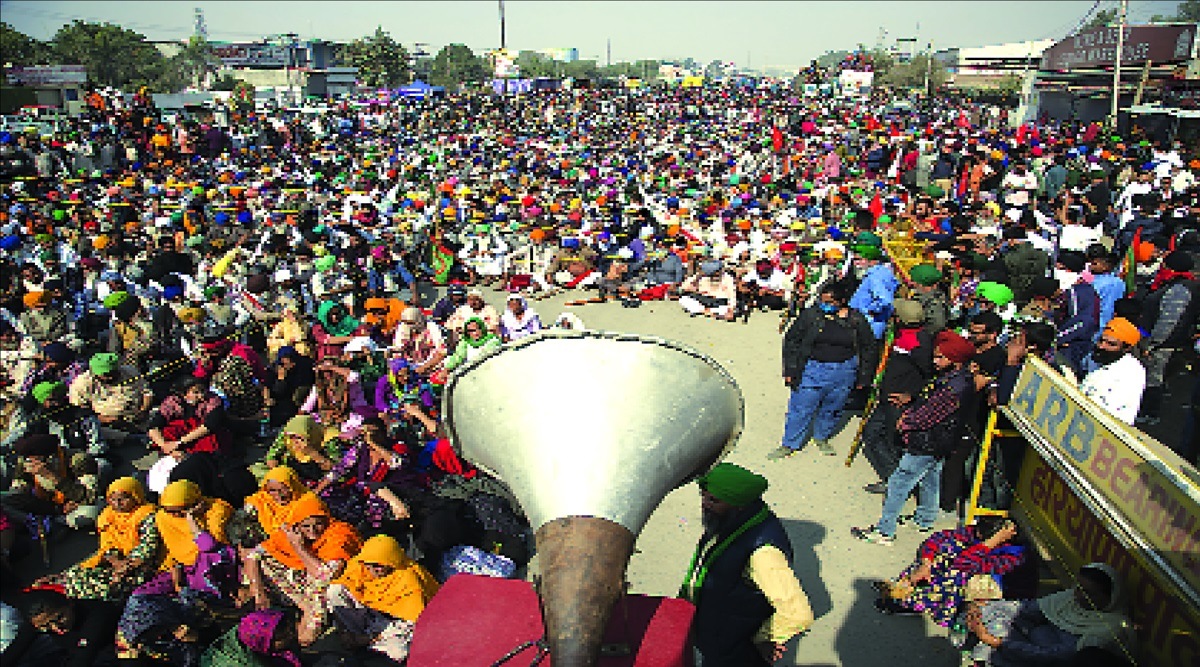 Photographs from Jaspal Kamana’s project on the farmers’ protest. Image by Jaspal Kamana
Photographs from Jaspal Kamana’s project on the farmers’ protest. Image by Jaspal Kamana As a photographer, Jaspal Kamana, a Chandigarh-based professor of Punjabi, photographer is constantly running against time, as he travels across Punjab to create a photographic encyclopedia of the culture, music, folk games, embroidery, agriculture instruments, Sufi deras, and local mela. The intent is to preserve and archive the fast-disappearing and dying traditions of the state, with his images a window to the past.
For someone who grew up in a family of farmers, rural life, its many trials and tribulations, challenges, simplicity of life are close to Kaman’s heart and soul, as he continues to be connected to his roots through his work and travels.
The farmers’ protest was not on the list of this project, but now that is his only focus.
“The first protest of such magnitude which has been registered, one that is not only of the farmers, but the common people, as people from every home in the villages of Punjab, Haryana, lend their support to the protest. Also, the protest is not of farmers, with the farm labour from as far as Bihar, UP, MP joining the farmers,” said Kamana, who received the Lalit Kala Akademi Award in 2009 and has showcased his work at many solo exhibitions.
As a photographer and artist, there are many aspects of the protest that he is observing at the protest sites of Tikri and Singhu, with intent to later chronicle it in a book form, and give the images in context of a text.
The many metaphors of the protest are what he is capturing, with the youngsters at the sites a major subject of his work.
The youth of Punjab, associated with drugs, violence, derogatory music, reflects Kamana, are lending their heart and soul to the cause, with the music and performances that you hear at the sites meaningful and powerful. The photographer is chronicling how the cultural boundaries are diminishing, with people of different castes, states, ideologies eating, sitting, talking together.
“They are on a common ground, and personally my work here is symbolic, as I strive to give it a creative and literary meaning. Hundreds of people sitting under a loudspeaker is a symbol, with the instrument the people’s voice. There are so many references of Bhagat Singh, Rajguru, Sukhdev here, with the youth inspired by their ideologies. Revolution comes from thoughts, not weapons, said Bhagat Singh…” he said.
Kamana’s work is also focused on the food, music, cultural variations, the involvement of children, breaking of barriers of caste, gender, class; the many odds the people are facing here daily, making it their temporary home.
“The positivity, truth is for everyone to feel, as their emotional attachment to the land is so deep. As a social photographer, an artist, I attempt to aesthetically chronicle this movement in time, where there is no space for negativity. This protest is a big part of history, and I hope to publish it in the form of a book. I belong to a farmer’s family and through my work, I stand with them.”Jaspal Kamana’s journey to document Punjab in images continues, this time focussing on farmers’ protest sites